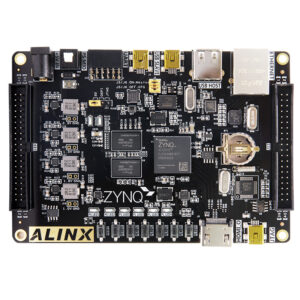We see these displays every day, and don’t even think about them. Commonly, we will see the displays on your digital alarm clock, elevator numbers, gas station price changer signs, stove top, and on microwave oven display screens.
Learning how to use them, is then really handy for any mini application!
Introduction
A seven-segment display is a group of light emitting diodes (LEDs) arrange in a pattern which can be powered individually. It is a form of electronic display device for displaying decimal numerals that is an alternative to the more complex dot-matrix displays. A 7 Segment display is shown in figure 1.

Working of a 7-Segment Display
A 7-segment display is an assembly of light emitting diode-bars (segments) They are arranged and labeled as shown in the figure 1, in the form of an ‘8’ in hexadecimal form. When all the segments are powered on, the display show the number 8. Powering up segments a, b, c, d, and g will display the number 3. Each individual 7-segment can display numbers from 0 to 9. The ‘dot’ or dp represents the decimal point, which can be selected either on the left or right side of the display.
There are two types of 7-segment displays available as shown in figure 2. In common cathode type , the cathode of all LEDs are tied together to a single terminal which is usually labeled as ‘com‘ and the anode of all LEDs are left alone as individual pins labeled as a, b, c, d, e, f, g & h (or dot) . In common anode type, the anode of all LEDs are tied together as a single terminal and cathodes are left alone as individual pins.

Digit drive pattern
Digit drive pattern of a seven segment LED display is simply the different logic combinations of its terminals ‘a’ to ‘g‘ in order to display different digits and characters. The common digit drive patterns (0 to 9) of a seven segment display are shown in the table below.
| Digit | a | b | c | d | e | f | g |
| 0 | 1 | 1 | 1 | 1 | 1 | 1 | 0 |
| 1 | 0 | 1 | 1 | 0 | 0 | 0 | 0 |
| 2 | 1 | 1 | 0 | 1 | 1 | 0 | 1 |
| 3 | 1 | 1 | 1 | 1 | 0 | 0 | 1 |
| 4 | 0 | 1 | 1 | 0 | 0 | 1 | 1 |
| 5 | 1 | 0 | 1 | 1 | 0 | 1 | 1 |
| 6 | 1 | 0 | 1 | 1 | 1 | 1 | 1 |
| 7 | 1 | 1 | 1 | 0 | 0 | 0 | 0 |
| 8 | 1 | 1 | 1 | 1 | 1 | 1 | 1 |
| 9 | 1 | 1 | 1 | 1 | 0 | 1 | 1 |
A simple Example
Let a see a simple simulation done in Proteus tool. Here we can see a circuit that consists of Logic toggle and four Push buttons along with 4511B BCD to 7-segment decoder and a 7 Segment display. A 5V dc is also given below as shown in figure 3.

Once the circuit is initiated by the toggle switch, we can see that a red square box blinks after the toggle switch and before the Push button switches. This means that the current is flowing. Now in figure 4, we can see that red square box blinks in first Push button on either side. This shows that the current is flowing past first push button as it is pressed. And we can see the 7 Segment display’s 1.

In figure 5, once the First and the last Push Buttons are pressed, the current flows through them at it displays 9 in the display

Thank you for reading this blog,
For more information about the product please visit:
http://www.tenettech.com/category/229/7-segment
For technical queries please drop an e-mail: info@tenettech.com






